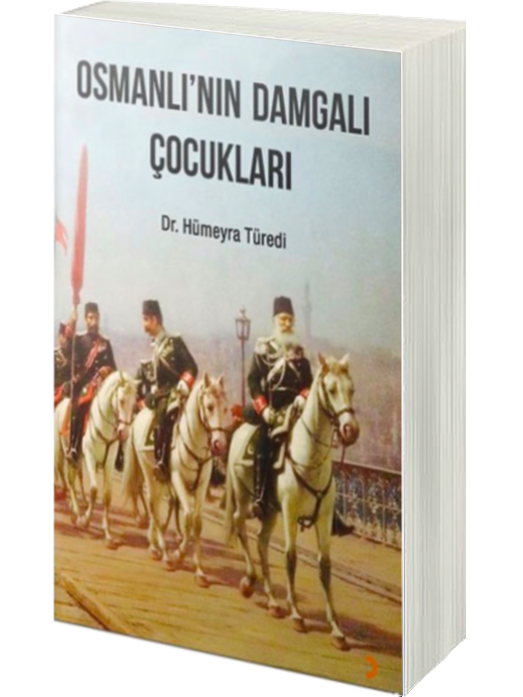
As more schools around the world turn to CLIL (Content and Language Integrated Learning), one thing becomes clear: it takes a special kind of teacher to make it work. CLIL isn’t just about teaching a subject in English (or any other foreign language). It’s about guiding students through content and language at the same time—a balancing act that calls for unique skills and lots of support.
A good CLIL teacher wears two hats at once. Take a science teacher, for example. They don’t just explain photosynthesis or chemical reactions. They also pay attention to the words and phrases students need to talk about these ideas. That means planning lessons that include clear instructions, key vocabulary, and simple ways to tackle complex language. On the flip side, a language teacher working with CLIL doesn’t just teach grammar in isolation. They tie it directly to real topics—like historical events, or math problems—so the language feels practical, not just theoretical.
This kind of flexible teaching doesn’t come naturally for everyone. Teachers need training to feel comfortable moving back and forth between subject content and language. They need practice simplifying ideas without “dumbing them down,” and knowing how to keep lessons challenging enough to stay interesting.
Another big part of CLIL is finding the right tools to support language learning. This might mean using visuals, sentence starters, word walls, or group activities that help students feel confident using new terms. It’s not about making lessons easy—it’s about making them accessible. And that balance takes know-how.
Teamwork also matters a lot. In many schools, CLIL works best when language teachers and subject teachers plan together—or even teach side by side. This way, students get the best of both worlds: accurate subject knowledge and strong language support. But co-teaching doesn’t just happen on its own. Teachers need to learn how to plan together, share ideas, and observe each other’s lessons to grow as a team.
Assessment in a CLIL class is another special skill. Teachers can’t just test what students know about science, or how well they write in English—they have to check both. That’s why CLIL training should show teachers how to create projects and tasks that test content knowledge and language skills at the same time. Using rubrics, giving clear feedback, and keeping the focus on growth helps students see how they’re improving on both fronts.
Technology is a huge help too—when used wisely. Interactive boards, apps, and bilingual resources can make lessons more engaging and give students extra ways to practice. But it’s not about using tech for its own sake. CLIL teachers need to know which tools really help students understand big ideas and build language skills.
And finally, CLIL isn’t just about words on a page. It’s about preparing students to think globally and respect other cultures. A good CLIL teacher knows how to bring diverse perspectives into the classroom, encourage open discussion, and make every student feel included—no matter their background.
All of this means that CLIL teachers need training that goes beyond a few workshops. They need real practice, ongoing feedback, and the chance to learn from each other. Some universities now offer CLIL certificates or special courses, which is a step in the right direction. But in many places, especially where CLIL is new, opportunities for proper training are still limited.
In the end, CLIL teachers are not just “subject teachers who speak English” or “language teachers who add topics.” They’re specialists in teaching students how to learn and express ideas in more than one language at the same time. With the right support and training, they can open doors for students to become confident, curious, and ready for a multilingual world.
References
- Marsh, D. (2002). CLIL/EMILE – The European Dimension: Actions, Trends and Foresight Potential. European Commission.
- Mehisto, P., Marsh, D., & Frigols, M. J. (2008). Uncovering CLIL. Macmillan Education.
- Coyle, D., Hood, P., & Marsh, D. (2010). CLIL: Content and Language Integrated Learning. Cambridge University Press.
- Bentley, K. (2010). The TKT Course CLIL Module. Cambridge University Press.
- Ball, P., Kelly, K., & Clegg, J. (2015). Putting CLIL into Practice. Oxford University Press.
CLIL Öğretmenlerinin Eğitimi: Gerekli Beceriler ve Araçlar
Dr. Hümeyra Türedi
Dünyada giderek daha fazla okul CLIL (İçerik ve Dil Bütünleştirmeli Öğrenim) yaklaşımını benimsedikçe, bir şey netleşiyor: Bu yöntemi etkili bir şekilde uygulayabilmek için özel bir öğretmen profiline ihtiyaç var. CLIL yalnızca bir dersi İngilizce (ya da başka bir yabancı dil) öğretmekten ibaret değildir. Aynı anda hem içerik hem de dil yolculuğuna rehberlik etmeyi gerektirir — bu da denge gerektiren, özgün beceriler ve yoğun destek isteyen bir süreçtir.
İyi bir CLIL öğretmeni aynı anda iki şapkayı birden takar. Örneğin bir fen bilgisi öğretmeni yalnızca fotosentez ya da kimyasal tepkimeleri açıklamaz; öğrencilerin bu kavramları ifade etmek için hangi kelimelere ve ifadelere ihtiyaç duyduğunu da göz önünde bulundurur. Bu da açık yönergeler, anahtar kelime listeleri ve karmaşık dili basitleştirerek planlama yapmayı gerektirir. Diğer yandan bir yabancı dil öğretmeni CLIL bağlamında yalnızca dilbilgisi öğretmekle yetinmez; dili doğrudan tarihsel olaylar ya da matematik problemleri gibi gerçek konulara bağlar — böylece dil yalnızca kuramsal değil, işlevsel hâle gelir.
Bu kadar esnek bir öğretim tarzı her öğretmene doğuştan gelmez. Öğretmenlerin içerik ve dil arasında geçiş yaparken kendilerini rahat hissetmeleri için eğitilmeleri gerekir. Karmaşık fikirleri “basitleştirmeden sadeleştirmeyi” öğrenmeleri, dersleri hem anlaşılır hem de yeterince zorlayıcı tutabilmeleri önemlidir.
CLIL’in önemli bir yönü de dili destekleyecek doğru araçları bulmaktır. Görseller, cümle başlatıcılar, kelime duvarları ya da grup etkinlikleri gibi öğeler öğrencilerin yeni terimleri güvenle kullanmalarını kolaylaştırabilir. Amaç dersleri basitleştirmek değil, ulaşılabilir kılmaktır — ve bu denge ustalık ister.
Ekip çalışması da çok büyük rol oynar. Birçok okulda CLIL en iyi, dil öğretmenleri ile branş öğretmenlerinin birlikte plan yaptığı — hatta birlikte ders verdiği — durumlarda işler. Bu şekilde öğrenciler hem doğru akademik bilgiye hem de güçlü dil desteğine aynı anda ulaşabilir. Ancak ortak öğretim kendiliğinden gelişmez; öğretmenlerin birlikte planlama yapmayı, fikir paylaşmayı ve birbirlerinin derslerini gözlemleyerek gelişmeyi öğrenmeleri gerekir.
CLIL sınıflarında değerlendirme de ayrı bir beceridir. Öğretmenler yalnızca öğrencinin bilimsel bilgisine ya da İngilizce yazma becerisine değil, her ikisine birden bakmalıdır. Bu nedenle CLIL eğitimi öğretmenlere hem içerik hem de dil becerilerini ölçen projeler ve görevler oluşturmayı öğretmelidir. Rubrikler kullanmak, açık geri bildirimler vermek ve gelişimi ön plana çıkarmak, öğrencilerin her iki alanda nasıl ilerlediklerini görmelerini sağlar.
Teknoloji de — akıllıca kullanıldığında — büyük bir destektir. Akıllı tahtalar, uygulamalar ve iki dilli kaynaklar dersleri daha ilgi çekici kılar, öğrencilere pratik yapmaları için fazladan fırsatlar sunar. Ancak burada da mesele teknolojiyi sırf kullanmak değil, öğrencilerin büyük fikirleri kavramasını ve dil becerilerini geliştirmesini sağlayacak araçları seçmektir.
Son olarak, CLIL yalnızca kitap sayfalarındaki kelimelerle ilgili değildir. CLIL aynı zamanda öğrencileri küresel düşünmeye ve farklı kültürlere saygı duymaya hazırlayan bir yaklaşımdır. İyi bir CLIL öğretmeni sınıfa çeşitli bakış açılarını taşımayı, açık tartışmalar teşvik etmeyi ve tüm öğrencilerin — kökeni ne olursa olsun — kendini dahil hissedeceği bir ortam oluşturmayı bilir.
Tüm bunlar, CLIL öğretmenlerinin sadece birkaç atölye çalışmasıyla yetiştirilemeyeceğini gösteriyor. Gerçek uygulama fırsatlarına, sürekli geri bildirime ve meslektaşlarından öğrenme olanaklarına ihtiyaçları vardır. Bazı üniversiteler artık CLIL sertifika programları ya da özel kurslar sunuyor ki bu doğru yönde atılmış bir adımdır. Ancak CLIL’in yeni olduğu birçok yerde, nitelikli eğitim olanakları hâlâ oldukça sınırlıdır.
Sonuç olarak, CLIL öğretmenleri yalnızca “İngilizce bilen branş öğretmenleri” ya da “konu ekleyen dil öğretmenleri” değildir. Onlar, öğrencilerin aynı anda birden fazla dilde düşünmeyi ve kendilerini ifade etmeyi öğrenmelerine rehberlik eden uzmanlardır. Doğru destek ve eğitimle, öğrencilerin kendine güvenen, meraklı ve çokdilli dünyaya hazır bireyler olarak yetişmelerine katkı sunabilirler.
Kaynakça
Marsh, D. (2002). CLIL/EMILE – The European Dimension: Actions, Trends and Foresight Potential. European Commission.
Mehisto, P., Marsh, D., & Frigols, M. J. (2008). Uncovering CLIL. Macmillan Education.
Coyle, D., Hood, P., & Marsh, D. (2010). CLIL: Content and Language Integrated Learning. Cambridge University Press.
Bentley, K. (2010). The TKT Course CLIL Module. Cambridge University Press.
Ball, P., Kelly, K., & Clegg, J. (2015). Putting CLIL into Practice. Oxford University Press.



